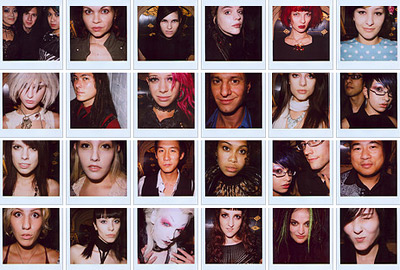Genderfork: Exploring Androgyny, Bending Binary

“Androgyny” by Rasha XO. (Via Genderfork.)
Earlier this summer, Warren Ellis (yes, that one guy we reference every ten minutes on COILHOUSE, shaddup) posted some cogent thoughts on what he describes as the end of “The Patchwork Years” on the internet: “Nobody needs another linkblog… There are already thousands of them. The job of curation is being taken care of. Look ahead.” He’s right. I’m as guilty of rehashing as the next blogger, but yeah. Generally speaking, we could do with far less circle-jerk turd-polishing online.
Paraphrasing the feisty theater renegade Maya Gurantz, those of us in any position to create new media should be baking new bread instead of quibbling over stale crumbs. At the very least, we existing curators should be doing helluva lot more cogitating instead of regurgitating the same tired old ones and zeros. (“Hey dood, check out this awesome link via BoingBoing via Fark via Digg via Shlomo McFluffernutter’s Livejournal feed. Cut, paste, click.”)
More on internet culture’s addiction to shorthand tastemaking at some later date.
Meanwhile, even in these postulated-out, post-patchwork years, it’s still very possible to be galvanized by some vital new curator. Fellow bay area sasspot Whitney Moses emailed me a while back about a blog called Genderfork, run by Sarah Dopp.

Shave by Madame Raro. (Via Genderfork.)
Genderfork is an exploration of androgyny and gender variance through artistic photography and personal essays. Dopp has two personal goals for the project:
To compile all of the genderforking resources, imagery, and ideas that I come across on the web into one beautiful repository. I want to experience a sense of cohesion with these concepts — they all too often feel scattered and disparate.
To encourage a conversation around the grey areas of gender with friends, with strangers, and with strangers who need to become friends.
…because I think we can all agree: Gender is a loaded word.
Loaded, and how. That’s why complex arguments revolving around gay marriage and partnership rights can become so volatile so quickly, and why debate rages endlessly on between gender-abolitionist feminists and their less radical sisters. It’s why surprisingly empathetic reportage on 20/20 examining the lives of transgender children feels like a huge victory, and why my co-editors and I fought tooth and nail to find a way to publish Siege’s Neogender piece in Coilhouse Issue 01, if only in a limited capacity.



















